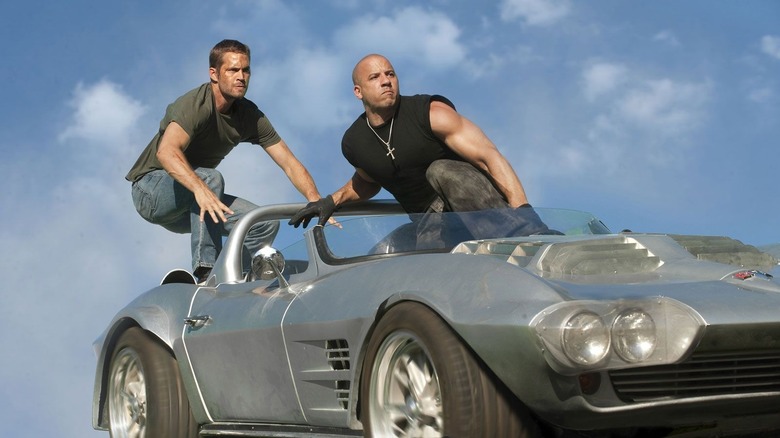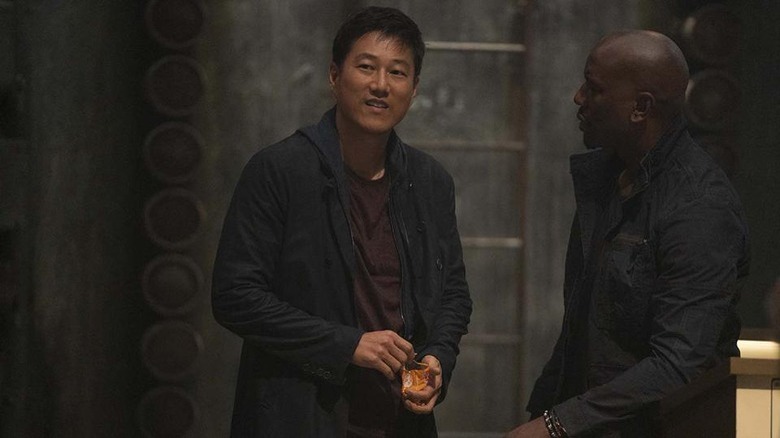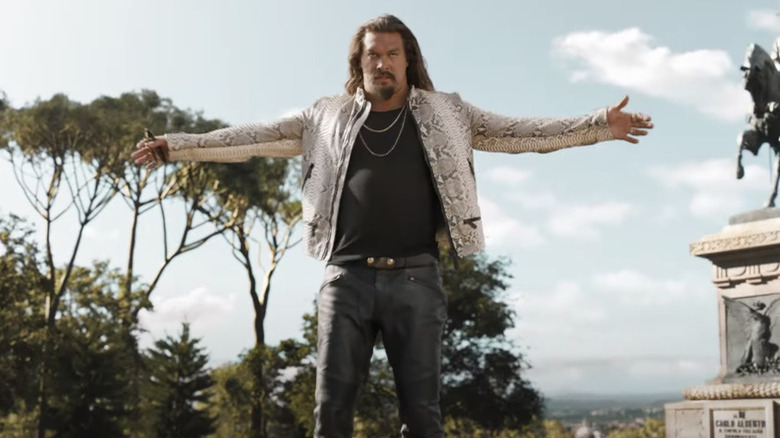How Fast And Furious Destroyed Its Continuity To Become The Best Version Of Itself
Serialized storytelling, whether on TV or on film, can be a source of exciting possibilities, but continuity and "canon" can also be restrictive. The Marvel Cinematic Universe is arguably the biggest franchise in movie history, but it is also a bit chaotic. There are elements that are just left hanging (remember the giant Celestial corpse sticking out of the ocean that everyone just ignores?) and there are now so many entries to the MCU that keeping it all straight and trying to add to the larger mythology is getting increasingly harder. This is why the best parts of the MCU in recent years just ignore the larger canon and focus on their own standalone story.
Likewise, DC movies have spent years attempting to both tell standalone stories in the universe Zack Snyder created starting with "Man of Steel" while slightly interconnecting many of them, resulting in an incomprehensible mess.
Then there's "Fast and Furious," arguably our greatest movie franchise, one with lore as complex and expansive as Marvel and with the kind of over-the-top emotion and as many twists and turns as a telenovela. No matter how many ludicrous reveals the franchise throws at us, it makes them work thanks to one guiding principle — the rule of cool. In the "Fast and Furious" movies, everything goes, and it somehow makes sense, even if to accomplish that, the movies have to walk back and retroactively destroy their own continuity before being reborn like a glorious phoenix.
I don't have continuity, I got family
There is nothing set in stone in the world of "Fast and Furious." Anyone that dies can come back, and any villain can suddenly become part of Dominic Toretto's family. Even when you think you know the history of the franchise, along comes a new movie to recontextualize it all, showing what was going on just off camera that changes everything.
The franchise started really playing around with its continuity in "Fast and Furious," the fourth film in the franchise. It was here that Dom and Brian were reunited after being apart for two movies. More importantly, this movie brought back Han (Sung Kang) after his death in the previous film, revealing that the franchise was not afraid to play out non-chronologically, with the next three films serving as prequels to "The Fast and the Furious: Tokyo Drift."
By disregarding chronology and trusting the audience to either keep up or just ignore it and have fun, "Fast and Furious" was able to introduce increasingly ludicrous concepts and ideas. This timeline change is what unlocked the potential for the franchise to reinvent itself from being about illegal car racing to becoming a super spy franchise with stunts and plots as big as "Mission: Impossible."
The even bigger magic trick, however, started with "Fast & Furious 6," which introduced the concept of recontextualizing previous movies to explain twists and turns. This is how Letty survived her apparent death in the fourth movie, or how Han's seemingly random death in "Tokyo Drift" appeared to be a murder by the bad guy in "Furious 7." (Except that's not what happened. Han actually faked his death in order to work for a secret agency, but we just didn't know about it until "F9.")
The rule of cool
The one Marvel movie that did something like this, something similar to what "Fast and Furious" does constantly, is "Spider-Man: Far From Home." That film pulled tiny characters from throughout the MCU to tell a story that seemed as if it were years in the making, squeezing narrative bang for buck out of its interconnected universe.
But "Fast and Furious" has more in common with shows like "Breaking Bad," or "Attack on Titan," which get a lot of praise in their storytelling for the writers' ability to constantly pull from the smallest details and pay them off years down the road. This is how something as small as Saul Goodman asking "Did Lalo send you?" in his first appearance on "Breaking Bad" became such an integral part of the story of "Better Call Saul," or how a single frame of Eren saying goodbye to his dad at the entrance to his house in the very first episode of "Attack on Titan" became a turning point of the story in one of the anime's best (and most emotionally charged) episodes.
Take the way "F9" pulls from Dom's backstory, which we learned about all the way back in "The Fast and The Furious," the very first movie in the franchise. "F9" retroactively introduced Dom's brother Jakob and revealed what really happened when Dom's father died, which sent Dom on a violent rampage that sent him to prison and essentially kickstarted the whole franchise. In "Fast X," the franchise once again retcons itself, by placing the newest villain, Dante, into the events of "Fast Five," making him integral to the larger story of the franchise. This is a rare franchise where every entry is essential, but not so much that plots are set in stone. Continuity is dead, and we're all better for it.


